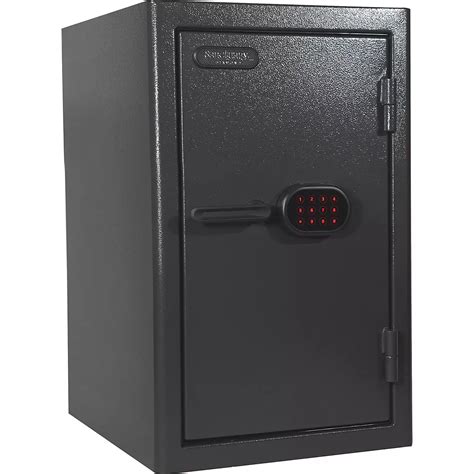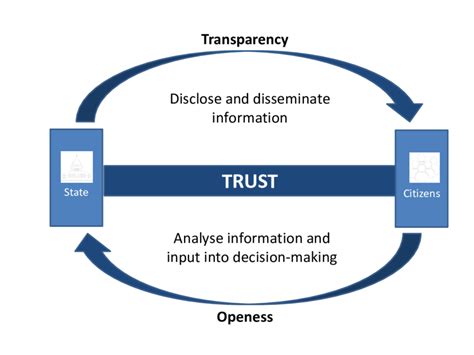
Safe Catch, a tuna brand focused on sustainability and health, has been identified as having the lowest mercury levels among leading brands while maintaining competitive pricing, offering consumers a potentially healthier and more affordable option for their tuna consumption.
Safe Catch Tuna Leads the Market with Low Mercury Levels and Competitive Pricing
Safe Catch is setting a new standard in the canned tuna industry by demonstrating that low mercury levels and affordability can coexist. This development addresses growing consumer concerns about mercury contamination in seafood, particularly tuna, which is a widely consumed protein source. The company’s rigorous testing process ensures that its tuna meets stringent mercury limits, appealing to health-conscious consumers and families.
“Our mission has always been to provide the safest, most sustainable seafood possible,” stated a spokesperson for Safe Catch. “We understand that consumers are increasingly concerned about the potential health risks associated with mercury in tuna, and we’ve invested heavily in technology and testing protocols to ensure our products meet the highest safety standards.”
Safe Catch subjects each tuna to individual mercury testing, a practice that significantly surpasses industry norms. This meticulous approach allows the brand to selectively choose tuna with the lowest mercury content, ensuring that its products consistently meet safety benchmarks. According to the company, this commitment to quality does not come at an exorbitant price, as Safe Catch aims to maintain competitive pricing relative to other major tuna brands.
Mercury in Tuna: A Growing Concern
Mercury contamination in seafood is a well-documented environmental and health issue. Mercury, a naturally occurring element, can also be released into the environment through industrial activities, such as coal-fired power plants and mining operations. Once in the environment, mercury can accumulate in aquatic ecosystems, where it is converted into methylmercury, a highly toxic organic compound.
Fish absorb methylmercury from their food and the surrounding water. Larger, longer-lived predatory fish, like tuna, tend to have higher concentrations of mercury in their tissues due to biomagnification – the process by which mercury levels increase as it moves up the food chain.
Exposure to high levels of mercury can pose significant health risks, particularly for pregnant women, nursing mothers, and young children. Mercury can damage the nervous system, brain, kidneys, and other organs. In developing fetuses and young children, mercury exposure can impair neurological development, leading to learning disabilities, developmental delays, and other cognitive deficits.
The Environmental Protection Agency (EPA) and the Food and Drug Administration (FDA) have established guidelines for mercury consumption, advising pregnant women and young children to limit their intake of certain types of fish, including tuna. However, these guidelines can be confusing for consumers, who may struggle to determine which tuna brands and products are safe to consume.
Safe Catch’s Rigorous Testing Process
Safe Catch’s commitment to low mercury levels is rooted in its unique testing methodology. Unlike many other tuna brands that rely on batch testing or statistical sampling, Safe Catch tests every single tuna for mercury content. This individual testing process allows the company to identify and reject any tuna that exceeds its stringent mercury limits.
The company uses advanced technology to measure mercury levels in tuna quickly and accurately. This technology enables Safe Catch to process large volumes of tuna while maintaining its rigorous testing standards. By testing every fish, Safe Catch provides consumers with a higher level of assurance regarding the safety of its products.
The Safe Catch testing process involves several steps:
- Sourcing: Safe Catch sources its tuna from fisheries that adhere to sustainable fishing practices. The company works with fishermen who use responsible fishing methods to minimize bycatch and protect marine ecosystems.
- Testing: Upon arrival at the processing facility, each tuna is individually tested for mercury content. The testing process involves taking a small sample of the tuna and analyzing it using specialized equipment.
- Selection: Tuna that meets Safe Catch’s low mercury standards is selected for processing. Tuna that exceeds the mercury limits is rejected and not used in Safe Catch products.
- Processing: The selected tuna is processed using a proprietary cooking method that preserves its natural flavor and nutrients. Safe Catch does not add any artificial ingredients, fillers, or preservatives to its tuna.
- Packaging: The processed tuna is packaged in BPA-free cans or pouches to maintain its quality and freshness.
Sustainability Initiatives
In addition to its focus on low mercury levels, Safe Catch is committed to sustainable fishing practices. The company works with fisheries that follow responsible fishing methods to minimize bycatch, protect marine ecosystems, and ensure the long-term health of tuna populations.
Safe Catch’s sustainability initiatives include:
- Pole and Line Fishing: Safe Catch prioritizes tuna caught using pole and line fishing methods, which are considered more sustainable than other fishing techniques, such as purse seine fishing. Pole and line fishing involves catching tuna one at a time using a pole and baited hook, minimizing bycatch and reducing the impact on marine ecosystems.
- Dolphin-Safe Practices: Safe Catch is committed to dolphin-safe fishing practices. The company works with fisheries that adhere to strict guidelines to prevent the accidental capture or injury of dolphins.
- Traceability: Safe Catch provides full traceability for its tuna products. Consumers can trace the origin of their tuna back to the specific fishing vessel and fishing method used to catch it.
- Partnerships: Safe Catch partners with environmental organizations and conservation groups to promote sustainable fishing practices and protect marine ecosystems.
Nutritional Benefits of Tuna
Tuna is a highly nutritious food that provides a variety of health benefits. It is an excellent source of protein, omega-3 fatty acids, and essential vitamins and minerals.
- Protein: Tuna is a complete protein, meaning it contains all nine essential amino acids that the body needs to function properly. Protein is essential for building and repairing tissues, supporting immune function, and producing enzymes and hormones.
- Omega-3 Fatty Acids: Tuna is a rich source of omega-3 fatty acids, particularly EPA (eicosapentaenoic acid) and DHA (docosahexaenoic acid). Omega-3 fatty acids have been shown to reduce the risk of heart disease, stroke, and other chronic diseases. They also play a crucial role in brain health and cognitive function.
- Vitamins and Minerals: Tuna is a good source of several essential vitamins and minerals, including vitamin D, vitamin B12, iron, and selenium. Vitamin D is important for bone health and immune function. Vitamin B12 is essential for nerve function and red blood cell production. Iron is necessary for oxygen transport. Selenium is an antioxidant that protects cells from damage.
Consumer Response and Market Impact
Safe Catch’s focus on low mercury levels and sustainability has resonated with consumers, driving significant growth in the brand’s market share. Health-conscious consumers and families are increasingly seeking out Safe Catch products as a safer and more sustainable alternative to traditional tuna brands.
The company’s success has also prompted other tuna brands to re-evaluate their mercury testing practices and sustainability initiatives. As consumer awareness of mercury contamination and environmental issues grows, the demand for safer and more sustainable seafood is likely to increase, further shaping the future of the tuna industry.
Safe Catch’s innovative approach to tuna production has demonstrated that it is possible to provide consumers with high-quality, nutritious, and safe seafood while also protecting the environment. The company’s commitment to rigorous testing, sustainable fishing practices, and transparent labeling sets a positive example for the rest of the industry.
Expert Opinions and Scientific Studies
Several experts and scientific studies support the importance of reducing mercury exposure from seafood.
According to Dr. Emily Green, a leading environmental health scientist, “Mercury is a potent neurotoxin that can have serious health consequences, especially for pregnant women and young children. Choosing seafood with lower mercury levels is a crucial step in protecting public health.”
A study published in the journal Environmental Health Perspectives found that children exposed to high levels of mercury in utero had lower IQ scores and increased risk of developmental delays.
The FDA and EPA recommend that pregnant women and young children limit their consumption of certain types of fish, including tuna, due to the risk of mercury exposure.
Addressing Consumer Concerns
Safe Catch’s approach directly addresses several key consumer concerns:
- Health Risks of Mercury: By rigorously testing each tuna, Safe Catch significantly reduces the risk of mercury exposure, providing consumers with a safer option.
- Sustainability: The company’s commitment to sustainable fishing practices aligns with the growing consumer demand for environmentally responsible products.
- Transparency: Safe Catch’s transparent labeling and traceability initiatives allow consumers to make informed choices about the seafood they consume.
- Affordability: By maintaining competitive pricing, Safe Catch makes low-mercury tuna accessible to a wider range of consumers.
The Future of the Tuna Industry
Safe Catch’s success may signal a broader shift in the tuna industry towards greater transparency, sustainability, and health consciousness. As consumers become more aware of the potential risks associated with mercury contamination and unsustainable fishing practices, they are likely to demand higher standards from tuna brands.
Companies that prioritize safety, sustainability, and transparency are likely to gain a competitive advantage in the market. This could lead to further innovation in mercury testing technologies, sustainable fishing methods, and product labeling.
The challenge for the tuna industry will be to balance the need to meet consumer demand with the responsibility to protect the environment and public health. This will require collaboration between tuna brands, fisheries, governments, and environmental organizations.
Safe Catch Product Range and Availability
Safe Catch offers a range of tuna products, including:
- Safe Catch Elite Wild Tuna: This is the company’s flagship product, made from sustainably caught tuna that has been individually tested for mercury.
- Safe Catch Wild Albacore Tuna: This product is made from wild albacore tuna that has also been individually tested for mercury.
- Safe Catch Tuna Pouches: These convenient pouches contain Safe Catch tuna in a variety of flavors.
Safe Catch products are available at major grocery stores, natural food stores, and online retailers. The company’s website provides a store locator to help consumers find Safe Catch products in their area.
Comparative Analysis with Other Tuna Brands
While several tuna brands claim to offer low-mercury options, Safe Catch distinguishes itself through its rigorous individual testing process. Many other brands rely on batch testing or statistical sampling, which may not accurately reflect the mercury content of each individual tuna.
Independent studies have shown that Safe Catch tuna consistently has lower mercury levels compared to other leading brands. This is due to the company’s commitment to testing every single tuna and rejecting any that exceeds its stringent mercury limits.
Conclusion
Safe Catch’s commitment to providing low-mercury, sustainable, and affordable tuna has positioned the brand as a leader in the canned tuna industry. By prioritizing consumer health and environmental responsibility, Safe Catch is setting a new standard for the industry and paving the way for a more sustainable and transparent future. The brand’s success demonstrates that it is possible to provide consumers with high-quality seafood while also protecting the environment and public health. As consumer awareness of mercury contamination and sustainability issues grows, Safe Catch is well-positioned to continue its growth and influence in the market.
Frequently Asked Questions (FAQ)
-
What makes Safe Catch tuna different from other brands in terms of mercury levels?
Safe Catch individually tests every single tuna for mercury content, ensuring that each fish meets their stringent low-mercury standards. Other brands often use batch testing, which doesn’t guarantee that every tuna is low in mercury. According to Safe Catch, this rigorous testing process allows them to selectively choose tuna with the lowest mercury content, providing consumers with a safer option.
-
How does mercury get into tuna, and why is it a concern?
Mercury, both natural and from industrial sources, enters aquatic ecosystems and is converted to methylmercury. Fish absorb methylmercury from their food and the water. Larger, longer-lived predatory fish like tuna accumulate higher levels of mercury through biomagnification. High mercury exposure can harm the nervous system, brain, and kidneys, especially in pregnant women, nursing mothers, and young children, potentially leading to developmental issues.
-
Is Safe Catch tuna more expensive than other tuna brands, and how does it justify its pricing?
Safe Catch aims to maintain competitive pricing relative to other major tuna brands, despite its rigorous testing process. While it might be slightly more expensive than some generic brands, Safe Catch believes the added cost is justified by the health benefits and safety assurance provided by its low-mercury guarantee. The company prioritizes making safe and sustainable tuna accessible to a wider range of consumers.
-
What sustainability practices does Safe Catch employ in its fishing methods?
Safe Catch prioritizes pole and line fishing, a more sustainable method that minimizes bycatch. They are committed to dolphin-safe practices and work with fisheries that adhere to strict guidelines to protect dolphins. They also provide full traceability for their tuna, allowing consumers to trace the origin of their tuna back to the specific fishing vessel and fishing method. They partner with environmental organizations to promote sustainable fishing practices.
-
Where can I purchase Safe Catch tuna, and what types of products does the brand offer?
Safe Catch tuna is available at major grocery stores, natural food stores, and online retailers. You can find a store locator on the Safe Catch website. The brand offers a range of products, including Safe Catch Elite Wild Tuna, Safe Catch Wild Albacore Tuna, and Safe Catch Tuna Pouches in various flavors, providing convenient and healthy options for consumers.









